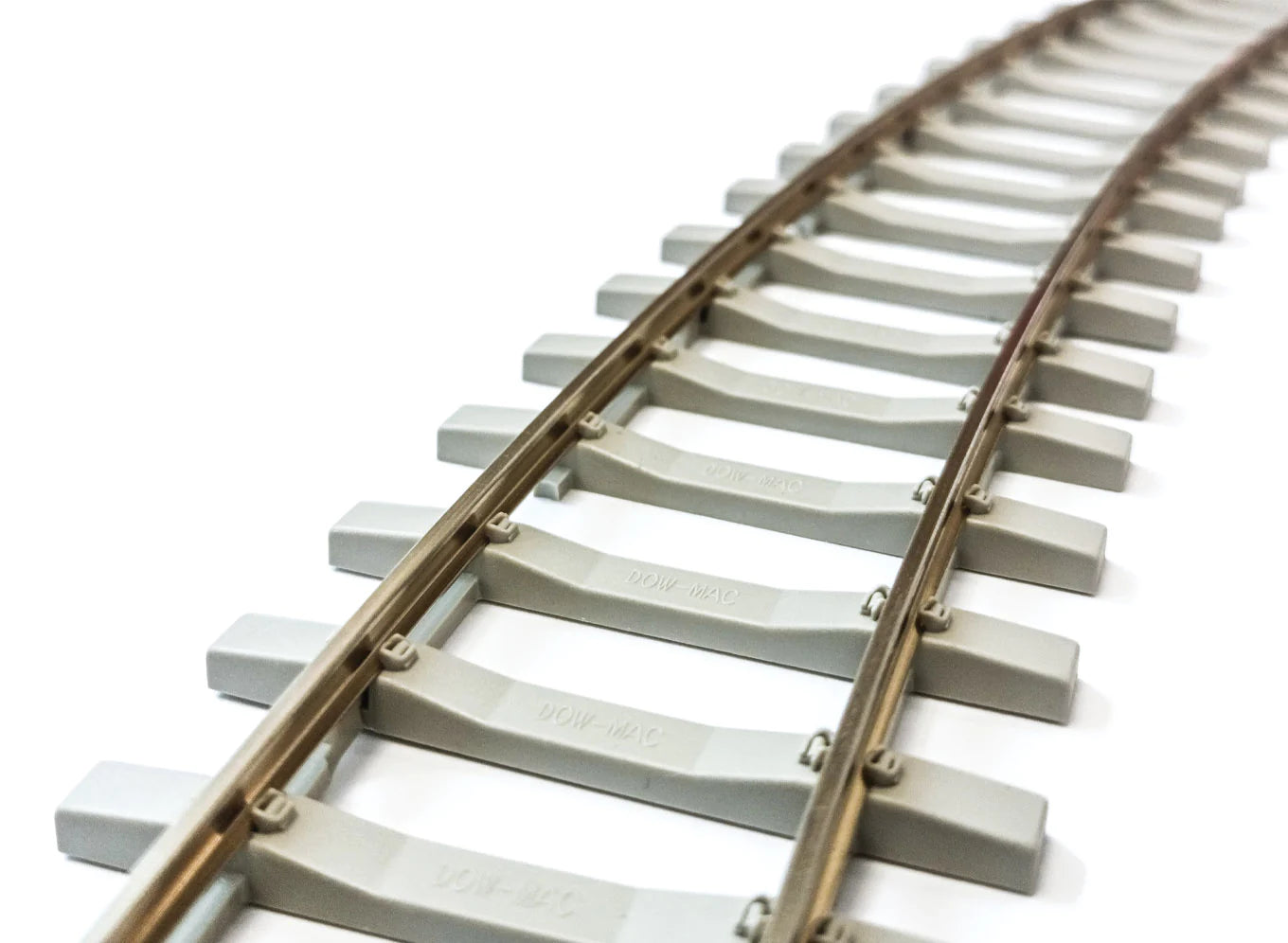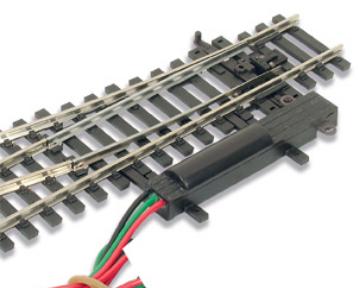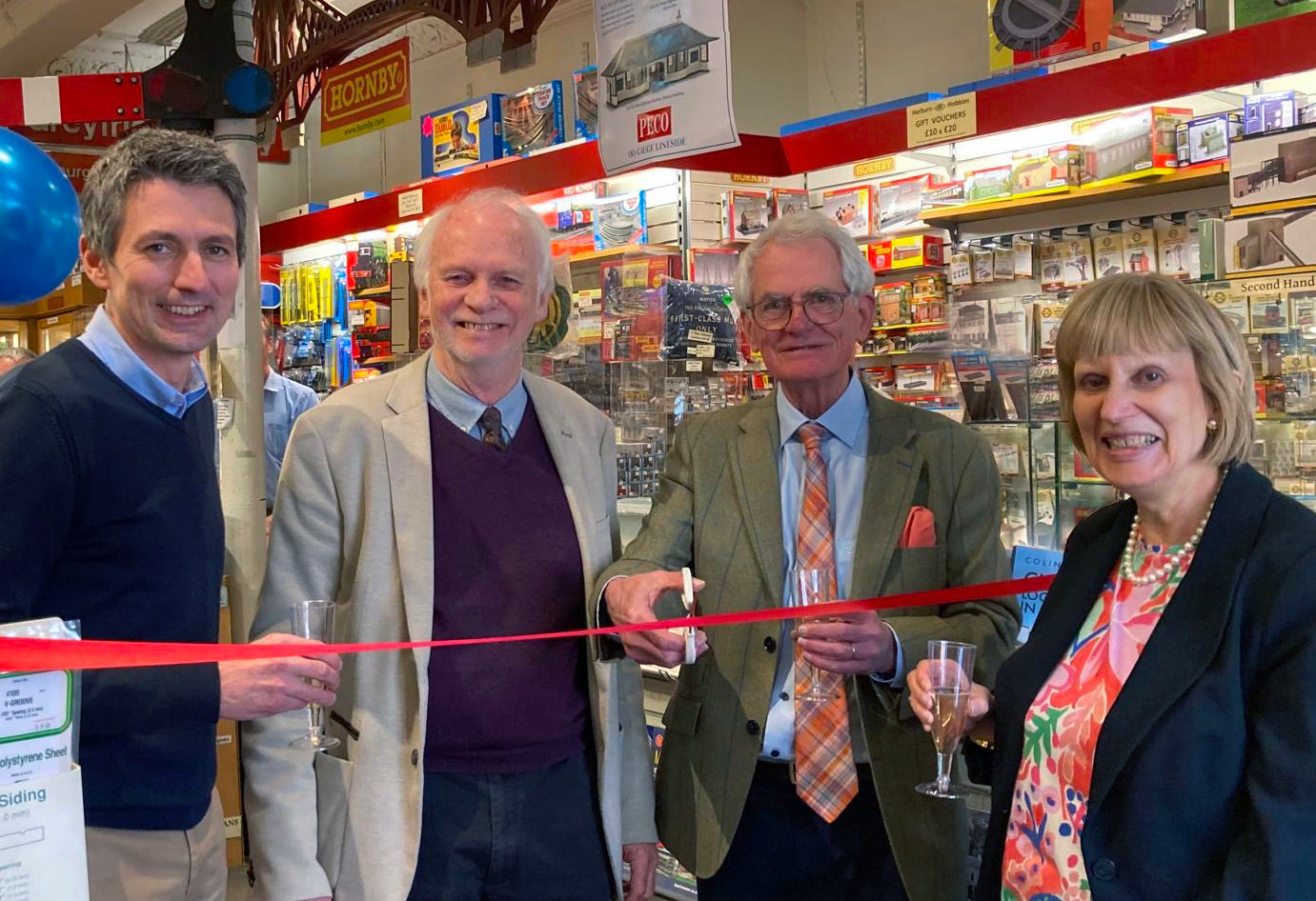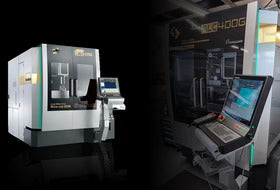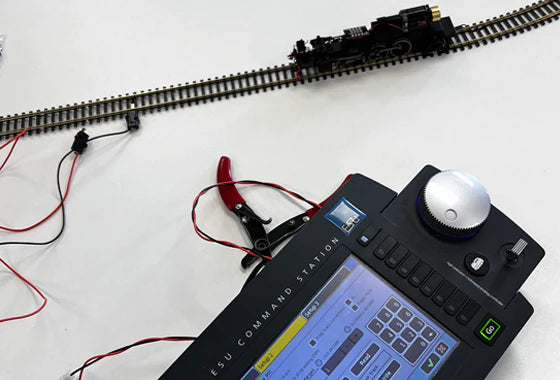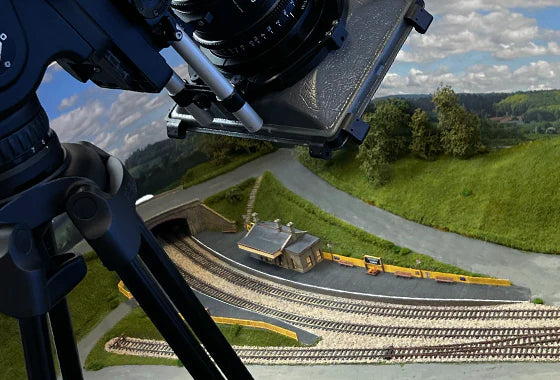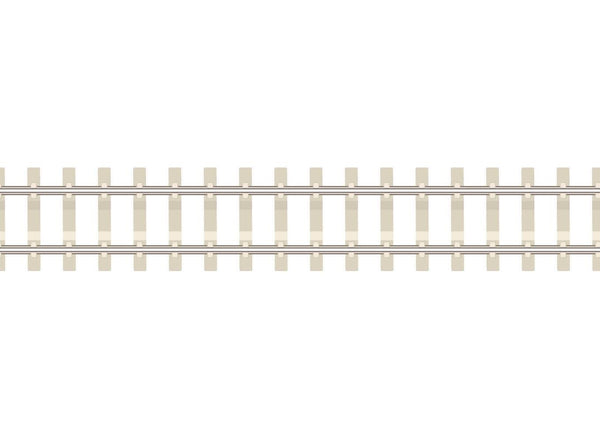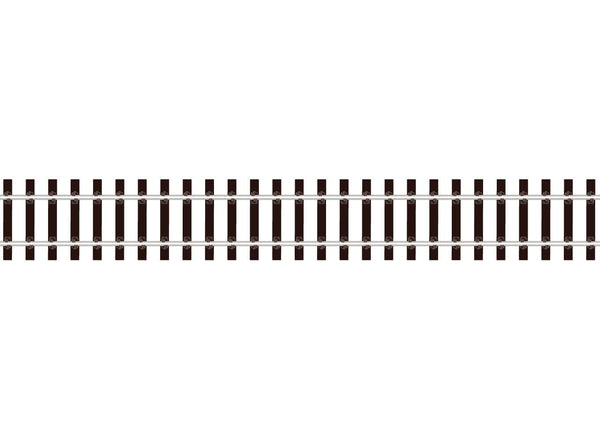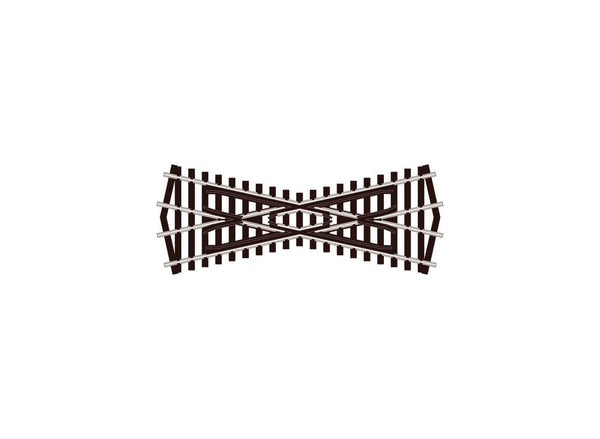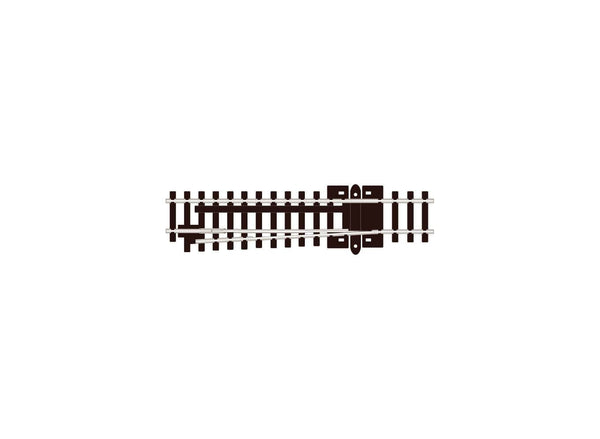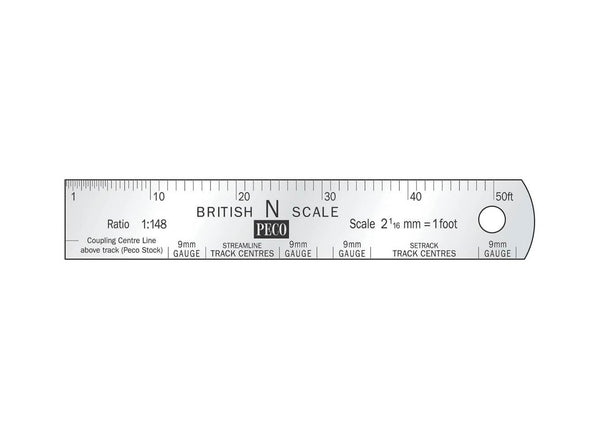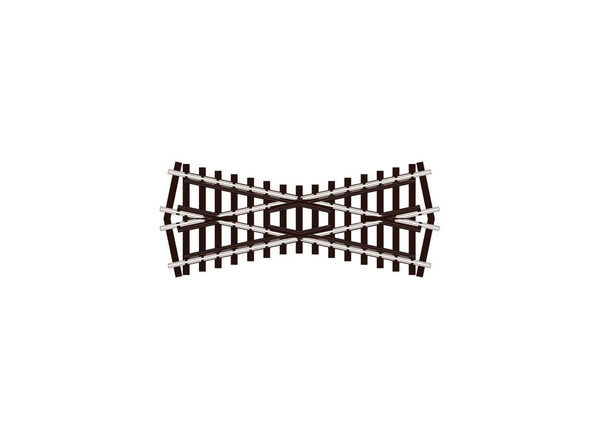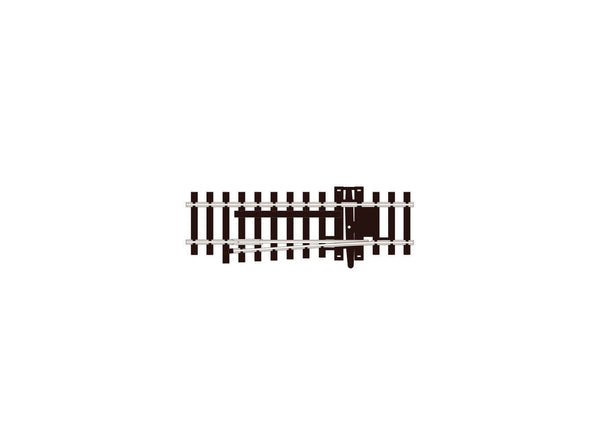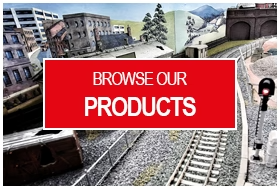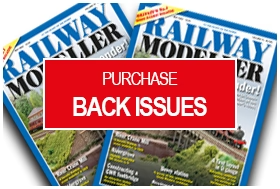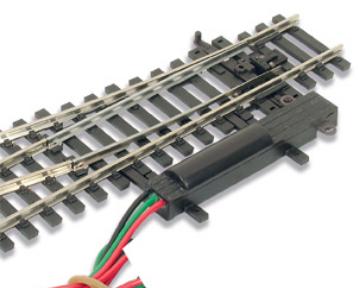BROWSE PECO PRODUCTS
Browse through our complete product portfolio.
690 Products Found
Flexible Track with Concrete Sleeper
Concrete sleeper track has been in use on the railways of Britain since around 1940, usually combined with wooden sleeper turnouts and crossings, and this track is a faithful representation of this design. PECO Streamline N Gauge Code 80 - Universal trackage system
This ever-popular trackage system for N offers a choice of either wooden or concrete type sleeper flexible track and a wide range of turnouts and crossings in both Insulfrog and Electrofrog types.
Suitable for all makes of N Gauge trains and fully compatible with PECO Setrack.
Flexible Track with Wooden Sleeper
PECO Streamline N Gauge Code 55 - Universal Fine trackage system
Despite a low visible rail height of just 1.4mm, all brands of N Gauge model locomotives will run on this track.
The ingenious rail section of PECO 55 combines strength and durability with a highly realistic appearance and uses the same universal rail joiners as Code 80; the geometry of this range has been cleverly designed to make it easy to build convenient, complex and aesthetically pleasing formations. For more details on Electrofrog turnouts, see our Wiring the Layout publications Nos 4 and 21.
Flat Bottom O Gauge Flexible Track - Wooden Sleeper
Peco Streamline Flat Bottom 0 Gauge track is superbly detailed, with correct scale width 'wood grain' sleepers and integrally moulded baseplates with Pandrol (TM) type rail fixings.
The SL-713 Transition Track is an ideal way to connect Flat Bottom track to the Bullhead Setrack and Streamline track systems.
Flexible Track Mainline Sleeper
For narrow gauge models built to either 00 (4mm) or H0 (3.5mm) scale and running on 9mm gauge track, this range emulates many narrow gauge lines found around Europe which are built to main line standards. It is compatible with the Peco 009 Setrack rigid track system.
Flexible Track Irregular Sleeper
For narrow gauge models built to either 00 (4mm) or H0 (3.5mm) scale and running on 9mm gauge track, this range depicts the slightly worn out old track of a picturesque old railway. It is fully compatible with the Peco 009 Setrack rigid track system.
Crossing, Short
PECO Streamline N Gauge Code 80 - Universal trackage system
This ever-popular trackage system for N offers a choice of either wooden or concrete type sleeper flexible track and a wide range of turnouts and crossings in both Insulfrog and Electrofrog types.
Suitable for all makes of N Gauge trains and fully compatible with PECO Setrack.
Catch Turnout, Left Hand
The purpose of a Catch Turnout is to derail a vehicle before it rolls out of a siding or branch line on to a main line.
This ever-popular trackage system for N offers a choice of either wooden or concrete type sleeper flexible track and a wide range of turnouts and crossings in both Insulfrog and Electrofrog types.
Suitable for all makes of N Gauge trains and fully compatible with PECO Setrack.
Catch Turnout, Right Hand
The purpose of a Catch Turnout is to derail a vehicle before it rolls out of a siding or branch line on to a main line.
This ever-popular trackage system for N offers a choice of either wooden or concrete type sleeper flexible track and a wide range of turnouts and crossings in both Insulfrog and Electrofrog types.
Suitable for all makes of N Gauge trains and fully compatible with PECO Setrack.
N Scale Rule
This stainless steel scale rule is a valuable tool for modelling in British N Gauge. It shows scale measurements from 3ins to 50ft, marked at 1:148 scale. It also includes markings for track gauge and spacing.
Crossing, Short
The Short Crossing is double the angle of other track components in this range, this enables it to be used to form scissors formations in conjunction with them. Also, a compact double junction can be formed by using it with 2 short Y turnouts (Overall length 275mm).
If you wish to mix wheel standards on your 00/H0 layout, this is the trackage to choose. Code 100 rail allows flange depths up to 1.6mm which means that both vintage and current stock will run happily together.
The wide range of turnouts and crossings in this series includes every type, and the geometry of this range has been cleverly designed to make it easy to build convenient, complex and aesthetically pleasing formations using combinations of small, medium and large radius turnouts and crossings. Layout plans suggestions can be found in our publications ‘Track Plans for Layouts to Suit all Locations’ (Ref PM-202), ‘60 Plans for Small Railways’ (Ref no PB-3), and ‘Track Plans for Various Locations’ (Ref no PB-66).
Catch Turnout, Left Hand
The purpose of a Catch Turnout is to derail a vehicle before it rolls out of a siding or branch line on to a main line.
If you wish to mix wheel standards on your 00/H0 layout, this is the trackage to choose. Code 100 rail allows flange depths up to 1.6mm which means that both vintage and current stock will run happily together.
The wide range of turnouts and crossings in this series includes every type, and the geometry of this range has been cleverly designed to make it easy to build convenient, complex and aesthetically pleasing formations using combinations of small, medium and large radius turnouts and crossings. Layout plans suggestions can be found in our publications ‘Track Plans for Layouts to Suit all Locations’ (Ref PM-202), ‘60 Plans for Small Railways’ (Ref no PB-3), and ‘Track Plans for Various Locations’ (Ref no PB-66).
Catch Turnout, Right Hand
The purpose of a Catch Turnout is to derail a vehicle before it rolls out of a siding or branch line on to a main line.
If you wish to mix wheel standards on your 00/H0 layout, this is the trackage to choose. Code 100 rail allows flange depths up to 1.6mm which means that both vintage and current stock will run happily together.
The wide range of turnouts and crossings in this series includes every type, and the geometry of this range has been cleverly designed to make it easy to build convenient, complex and aesthetically pleasing formations using combinations of small, medium and large radius turnouts and crossings. Layout plans suggestions can be found in our publications ‘Track Plans for Layouts to Suit all Locations’ (Ref PM-202), ‘60 Plans for Small Railways’ (Ref no PB-3), and ‘Track Plans for Various Locations’ (Ref no PB-66).
